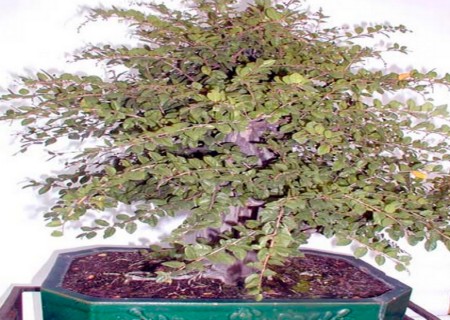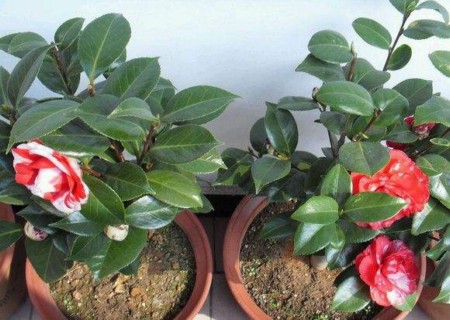Planting and cultivation methods of four Seasons clove (Syringa microphylla)
The four seasons clove, namely clove, has slender branches, beautiful trees and bright colors, and blossoms twice a year. It is an excellent flowering shrub in the garden. It is suitable for planting in gardens, residential areas, hospitals, schools, kindergartens or other gardens and scenic spots. It can be planted alone, in clusters or in roadsides, lawns, corners and forest edges, or with other trees and shrubs, especially evergreen trees.
Four Seasons cloves are widely used in the landscaping of Harbin, Shenyang and other northern cities. It likes light and cold, has almost no diseases and insect pests, has a strong ability to resist drought, and has a good greening effect in Northeast China. The following is to introduce the cultivation methods of cloves of the four seasons.
The cultivation is easy and the management is extensive. It can be propagated by sowing, cutting, grafting, striping and ramet, etc. Sowing is carried out in spring and autumn. Before sowing, the seeds are stored in sand for 1-2 months at 0-7 degrees Celsius, and seedlings can emerge within half a month after sowing. The cuttings were cut one month after flowering, and the semi-lignified sturdy branches of the current year were selected as cuttings. Grafting is carried out from late June to mid-July, which can be grafted by buds or branches, and the rootstocks are mostly European cloves or lobular privet.
1. Lilacs of the four seasons like plenty of sunshine and bear half-shade. Strong adaptability, cold tolerance, drought tolerance, barren tolerance, less diseases and insect pests. It is appropriate to use neutral soil with good drainage and loose, and avoid acidic soil. Avoid waterlogging, dampness and heat.
2. Lilac flowers of the four seasons should be transplanted before budding in early spring. In the transplanting hole, we should first apply sufficient base fertilizer, cover the base fertilizer with a layer of soil, and then put seedlings to fill the soil. Watering once after planting, and then watering for 2-3 times can survive.
3. Cloves of the four seasons have strong adaptability and extensive management. Usually, as long as we pay attention to weeding, waterlogging prevention in rainy season and watering in drought, we can grow smoothly. Cloves do not like big fat, do not fertilize too much, so as not to cause branches to grow and affect flowering. It is generally possible to apply rotten compost once a year or every other year before winter.
4. Before sprouting in the middle of March, the cloves of the four seasons should be shaped and pruned. Sulfur should be removed from dense branches, weak branches, disease and insect branches, and vigorous long branches should be cut off to make the canopy ventilated and transparent.
5. If there is no seed left after flower fade, the residual flower together with the two buds in the lower part of the flower ear can be cut off to reduce nutrient consumption and promote the germination of new branches and the formation of flower buds. After falling leaves, you can also carry out a pruning to keep the crown round and beautiful, which is conducive to growth and flowering in the coming year.
6. There are few diseases and insect pests of lilac in the four seasons. The main pests are aphids, pocket moths and thorns. It can be sprayed with 80-1000 times 40% dimethoate emulsion or 1000 times 25% imidophos emulsion.
Time: 2019-05-24 Click:
- Prev

How to breed and cultivate bonsai of sparrow plum vine
Sparrow plum vine, also known as sparrow plum and pair of thorns. It is a trailing shrub of the genus Rhamnaceae. The bark is grayish brown, the branches are thin and long, and the leaves are small, leathery. Florescence September-October, spike panicle, green-white. From April to May in the second year, the fruit is purple-black when it is ripe, and the ornamental value is higher. Sparrow plum rattan Xi Guang
- Next

Seed planting method of potted Camellia
Camellia blossoms in winter and spring, full of flowers, dignified and elegant, is one of the top ten traditional Chinese flowers, but also one of the world famous flowers. Guo Moruo highly praised and said: Camellia early peach red, a hundred clouds whistling proud. Camellia not only has the unique durability of camellia, but also has the proud plum style and colorful red flowers, which can occupy the spring breeze in the deep moon.
Related
- Fuxing push coffee new agricultural production and marketing class: lack of small-scale processing plants
- Jujube rice field leisure farm deep ploughing Yilan for five years to create a space for organic food and play
- Nongyu Farm-A trial of organic papaya for brave women with advanced technology
- Four points for attention in the prevention and control of diseases and insect pests of edible fungi
- How to add nutrient solution to Edible Fungi
- Is there any good way to control edible fungus mites?
- Open Inoculation Technology of Edible Fungi
- Is there any clever way to use fertilizer for edible fungus in winter?
- What agents are used to kill the pathogens of edible fungi in the mushroom shed?
- Rapid drying of Edible Fungi

